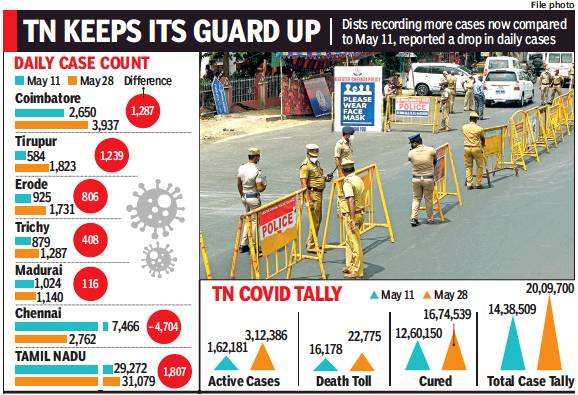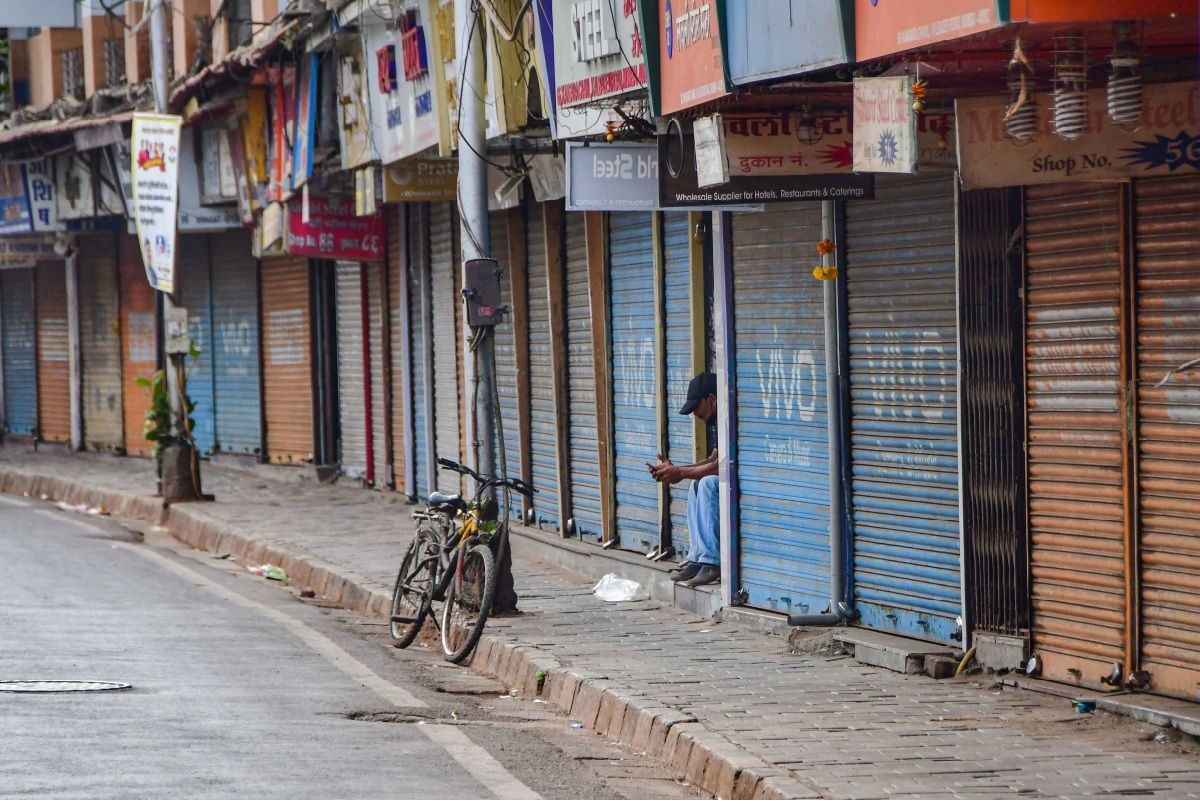At least 5.7 lakh people tested positive and 6,597 died of Covid-19 when the state was in lockdown for 17 days between May 11 and 28. On Friday, the state decided to extend the intense lockdown after seeing its positive effects in at least seven districts, including Chennai. Epidemiologists have also reported a welcome increase in doubling time and decrease in infection reproduction rate (R-naught).

Rise and fall of cases
Chennai, which logged 7,466 new cases on May 11, reported 2,762 cases on May 28. Cases in Chengalpet dropped from 2,419 to 1,379 and in Tiruvallur, it came down from 1,204 to 967 in the same time period. “Across the world, lockdown seems to be the only quick and effective way to bring down the infection,” said health minister Ma Subramanian.
Even in districts that now report more cases compared to May 11, fresh cases are starting to fall. Coimbatore, which reported 2,650 on May 11, reported 4,734 cases on Thursday. But on Friday, cases fell to 3,937. In Tirupur, cases increased from 582 on May 11 to 2,074 on Thursday, but again fell to 1,823 on Friday. Public health officials said closing industries in these districts helped break the viral reproduction. “When we give little chance for the virus to spread, the fall in epidemic curve is as quick as the rise,” said director of public health Dr T S Selvavinayagam. Daily cases in TN shot up to more than 36,000 during the lockdown period, but is now around 31,000. Over the past few days, Tiruvarur and Karur districts in central TN have seen an increase. On May 11, Karur and Tiruvarur had 166 and 270 cases respectively. They are now reporting more than 500 cases. “We expect cases to fall in both districts in the next few days,” he said.
Infection rate down
Tamil Nadu’s test positivity rate – percentage of people testing positive over total tested – has plateaued around 20.3% in the past two weeks. At least 14 districts, particularly Chennai, reported a fall in test positivity rate. The test positivity rate, however, is high across western districts, but officials say the falling R-naught will reduce cases in west and across TN. The R value of TN, which went above 1 in the third week of February, went up to 1.4 on March 20 and was stable for a month.
On May 11, the R-value was around 1.1 and has been consistently declining. Since May 21, the R-value is below 1. The doubling period for cases increased from 33 days on May 11 to 39 days on May 28.
Bed availability
The availability of beds improved in districts with fall in cases. While occupancy rate in most hospitals was still above 90%, the wait time for an oxygen or ICU bed reduced to an average of two hours from more than six hours on May 11 in Chennai and surrounding districts. “The stressful period of people waiting in ambulances at the foyers is over now,” said Rajiv Gandhi Government General Hospital dean Dr Theranirajan. “Our beds are full, but we are able to take most people directly into the emergency room and allot them beds in wards or ICU.” The struggle for beds in high incidence districts such as Coimbatore continues, but officials say they will be able to bring down the incidence in a few days. “Our system was overwhelmed, and doctors were tired, but we made judicious use of resources,” said director of medical education Dr R Narayanababu.



































